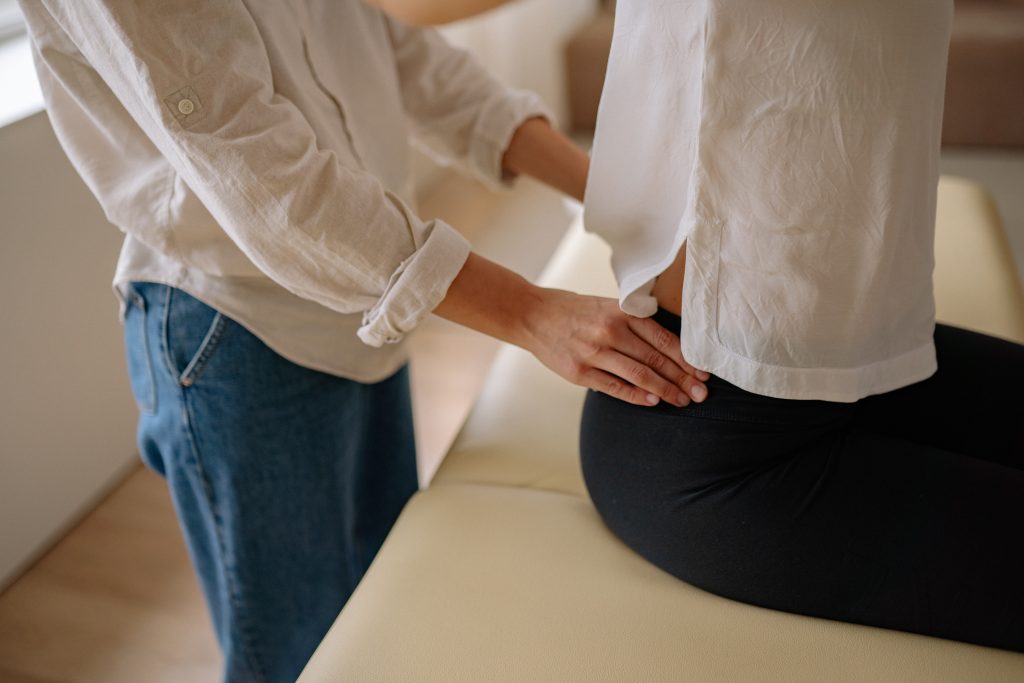Discover effective and targeted physical therapy exercises designed specifically for postpartum women.
Specific Physical Therapy Exercises Tailored for Postpartum Women
Being a new mom is an incredible and rewarding experience, but it can also take a toll on your body. After giving birth, many women experience physical changes that can affect their overall well-being. That’s where postpartum physical therapy comes in. With specific exercises designed for the postpartum body, you can regain strength, improve mobility, and enhance your overall quality of life. Join me on this informative journey as we explore the world of postpartum physical therapy and discover exercises that are tailored just for you.
Understanding the Postpartum Body
Before we dive into the exercises, let’s take a moment to understand the changes that your body goes through after childbirth. During pregnancy, your abdominal muscles stretch to accommodate your growing baby. After delivery, these muscles need time to heal and regain their strength. Additionally, hormonal changes can cause ligaments to become more relaxed, potentially affecting your stability and balance. It’s important to acknowledge and respect these changes as you embark on your postpartum physical therapy journey.

The postpartum period is a transformative time for a woman’s body. As you transition from carrying a baby to caring for a newborn, your body undergoes numerous changes. From the shifting hormone levels to the physical stress of carrying and delivering a baby, it’s no wonder that many women experience issues such as pelvic pain, diastasis recti (separation of abdominal muscles), and weakened pelvic floor muscles.
Postpartum physical therapy aims to address these concerns and help you regain your strength and functionality. It is a specialized branch of physical therapy that focuses on the unique needs of women during the postpartum period. By working with a skilled physical therapist, you can benefit from a tailored exercise program that focuses on rebuilding your core strength, improving your posture, and addressing any specific issues you may be facing.
Changes in the Body After Childbirth
During pregnancy, your body goes through significant changes to support the growth and development of your baby. The uterus expands, stretching the abdominal muscles to accommodate the growing fetus. As a result, the muscles may become weakened and stretched out after childbirth. This can lead to diastasis recti, a condition where the abdominal muscles separate.
In addition to changes in the abdominal muscles, hormonal fluctuations can also affect the ligaments in your body. Relaxin, a hormone released during pregnancy, causes the ligaments to become more relaxed. While this is necessary for childbirth, it can also affect your stability and balance postpartum. It’s important to be aware of these changes and take appropriate measures to support your body’s healing process.
The Importance of Physical Therapy for Postpartum Women
Physical therapy after childbirth is not just a luxury; it’s a necessity. The demands of pregnancy and childbirth can take a toll on your body, and without proper rehabilitation, you may experience long-term complications. By working with a skilled physical therapist, you can address the specific issues you may be facing, such as pelvic pain, diastasis recti, or weakened pelvic floor muscles.
A postpartum physical therapy program typically includes exercises that target the core muscles, including the abdominal muscles, pelvic floor muscles, and back muscles. These exercises help to strengthen and stabilize the muscles, improving your overall functionality and reducing the risk of future complications.
Furthermore, physical therapy can also provide emotional support during the postpartum period. Adjusting to life as a new mom can be challenging, and having a supportive healthcare professional by your side can make a significant difference. Your physical therapist can offer guidance, encouragement, and reassurance as you navigate the physical and emotional changes that come with motherhood.
In conclusion, understanding the changes that your body goes through after childbirth is crucial for a successful postpartum physical therapy journey. By acknowledging and respecting these changes, and by working with a skilled physical therapist, you can regain your strength, improve your functionality, and enhance your overall well-being as a new mom.
Starting Your Postpartum Physical Therapy Journey
Now that you understand the importance of postpartum physical therapy, let’s delve into how to get started on your journey towards a healthier, stronger, and more confident you!
After giving birth, your body goes through numerous changes and adjustments. Postpartum physical therapy can help you regain strength, improve mobility, and address any issues that may have arisen during pregnancy and childbirth. It is a specialized form of therapy that focuses on the unique needs of postpartum women.
When it comes to starting your postpartum physical therapy, timing is key. It’s important to give your body some time to heal after childbirth before diving into any vigorous exercises. Typically, postpartum physical therapy can begin around 4 to 6 weeks after delivery. However, every woman is different, so it’s crucial to consult with your healthcare provider to determine the best time for you to start.
When to Start Postpartum Physical Therapy
As mentioned earlier, the recommended timeframe for starting postpartum physical therapy is around 4 to 6 weeks after giving birth. This period allows your body to recover from the physical stress of pregnancy and childbirth. It gives your muscles, joints, and ligaments time to heal and regain their strength.
During the first few weeks after delivery, your body will naturally undergo various changes. Your uterus will shrink back to its pre-pregnancy size, your hormone levels will stabilize, and your body will begin to adjust to its new normal. It’s important to listen to your body during this time and give yourself the rest and care you need.
Once you’ve reached the 4 to 6-week mark, you can start considering postpartum physical therapy. However, it’s essential to keep in mind that every woman’s recovery timeline is different. Factors such as the type of delivery, any complications during childbirth, and your overall health will influence when you can safely begin therapy.
Finding the Right Physical Therapist
When it comes to postpartum physical therapy, having the right therapist by your side can make all the difference. Look for a physical therapist who specializes in women’s health and has experience working with postpartum patients. Their knowledge and expertise will ensure that you receive the best possible care and guidance throughout your recovery journey.
Start by asking for recommendations from your healthcare provider, friends, or other mothers who have undergone postpartum physical therapy. It’s important to find a therapist who understands the unique challenges that come with postpartum recovery and can tailor their treatment plan to meet your individual needs.
During your initial consultation with a potential physical therapist, don’t hesitate to ask questions about their experience, qualifications, and treatment approach. It’s essential to feel comfortable and confident in their abilities to guide you through your postpartum recovery.
Remember, postpartum physical therapy is not just about healing your body physically. It’s also about providing emotional support and reassurance during this transformative time in your life. A skilled and compassionate physical therapist will be there to listen to your concerns, answer your questions, and celebrate your progress every step of the way.
Key Physical Therapy Exercises for Postpartum Women
Now, let’s get into the exciting part – the exercises! The following exercises are specifically designed to target the areas that are most affected during the postpartum period, helping you regain strength, stability, and function.
Strengthening the Pelvic Floor
The pelvic floor muscles play a crucial role in supporting your organs and maintaining bladder and bowel control. After childbirth, these muscles can become weak, leading to issues such as urinary incontinence. Kegel exercises are a great way to strengthen your pelvic floor. Start by squeezing and lifting the muscles around your vagina and anus as if you were trying to stop the flow of urine. Hold for a few seconds, then release. Repeat this exercise several times a day to gradually increase the strength of your pelvic floor muscles.
Restoring Core Stability
The core muscles, including the deep abdominal muscles and the muscles around your spine, provide support and stability for your entire body. To restore core stability, try gentle abdominal contractions. Lie on your back with your knees bent and feet flat on the floor. Breathe deeply, and as you exhale, gently draw your belly button towards your spine. Hold for a few seconds, then release. Repeat this exercise several times to engage your core muscles and strengthen your abdominal region.
Improving Posture and Alignment
During pregnancy, your posture can be greatly affected by the changes happening in your body. To improve your posture and alignment, try the wall angel exercise. Stand against a wall with your feet about six inches away from the baseboard. Place your buttocks, upper back, and head against the wall. Bend your elbows to 90 degrees and press them against the wall. Slowly slide your arms up and down while maintaining contact with the wall. This exercise helps strengthen your upper back muscles, improve shoulder mobility, and promote better posture.
Tailoring Exercises to Individual Needs
Although the exercises mentioned above are effective for many postpartum women, it’s important to remember that everyone’s body is unique. It’s crucial to work with a physical therapist who can assess your specific needs and create a personalized exercise routine tailored just for you.
Assessing Your Physical Condition
During your initial physical therapy session, your therapist will assess your physical condition, taking into account any postpartum complications or specific concerns you may have. They will evaluate your range of motion, strength, and stability to identify areas that need improvement. These assessments will help guide the development of your customized exercise program.
Customizing Your Exercise Routine
Based on your assessment, your physical therapist will create a customized exercise routine that addresses your specific needs and goals. This may include a combination of the exercises mentioned earlier, as well as other exercises that target your individual areas of concern. Your therapist will not only guide you through each exercise but also provide valuable feedback and adjustments to ensure proper form and maximum benefit.
Maintaining Progress and Preventing Injury
Once you have established your postpartum exercise routine, it’s important to monitor your progress and take steps to prevent injury.

Monitoring Your Progress
Regular check-ins with your physical therapist are essential to track your progress and make any necessary adjustments to your exercise routine. Celebrate your achievements and discuss any concerns or challenges you may be facing. Your therapist can help modify your program as needed to ensure continued improvement.
Tips to Prevent Injury During Exercise
While exercise is beneficial, it’s important to listen to your body and exercise safely. Here are a few tips to help prevent injury during your postpartum physical therapy sessions:
- Start slow and gradually increase the intensity and duration of your exercises.
- Warm up before each session with gentle stretching or a short walk.
- Pay attention to your posture and form during exercises to avoid strain on your joints and back.
- Stay hydrated and take breaks as needed.
- If you experience pain or discomfort, stop and consult with your physical therapist.
Remember, the goal of postpartum physical therapy is to support your recovery and help you regain your strength and functionality. By following a tailored exercise program and working closely with your physical therapist, you can embrace this exciting chapter of motherhood with confidence and vitality. Let’s embark on this journey together!



